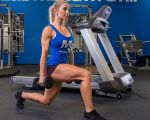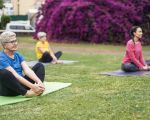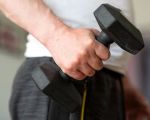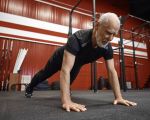- 1-Importance-of-fitness-for-healthy-aging
- 2-Cardiovascular-exercises-to-boost-endurance
- 3-Strength-training-for-muscle-maintenance
- 4-Flexibility-and-balance-exercises
- 5-Nutrition-and-lifestyle-considerations
- 6-Real-life-stories-and-expert-advice
1. Importance of Fitness for Healthy Aging
As we age, maintaining fitness becomes essential not only for physical health but also for mental well-being and overall quality of life. Fitness tips for healthy aging emphasize staying active to reduce risks of chronic diseases, enhance mobility, and promote independence. A balanced fitness routine tailored to individual needs supports cardiovascular health, muscle strength, flexibility, and cognitive function.
Recognizing the importance of consistent exercise early on lays the groundwork for aging gracefully and vibrantly.
2. Cardiovascular Exercises to Boost Endurance
Incorporating cardiovascular exercises such as walking, swimming, or cycling helps improve heart health and stamina. These activities increase blood circulation, reduce blood pressure, and aid in weight management. Even moderate-intensity workouts done regularly can have significant benefits.
For example, a study showed that older adults who engaged in brisk walking for 30 minutes most days experienced enhanced endurance and lower risks of heart disease. Starting slow and gradually increasing intensity helps prevent injury and builds confidence.
3. Strength Training for Muscle Maintenance
Muscle mass naturally declines with age, but strength training can counteract this process. Using resistance bands, free weights, or bodyweight exercises helps preserve muscle strength and bone density, reducing fall risk and improving daily function.
Exercises targeting major muscle groups twice a week are recommended. A practical example includes a 65-year-old woman who integrated simple resistance training into her routine and noticed improved balance and ease in daily activities within a few months.
4. Flexibility and Balance Exercises
Maintaining flexibility and balance is crucial to prevent injuries and support mobility. Practices like yoga, tai chi, and stretching routines enhance joint function and coordination. These exercises also promote relaxation and stress reduction.
Incorporating balance training, such as standing on one leg or using balance boards, can improve stability and reduce fall risk significantly in older adults.
5. Nutrition and Lifestyle Considerations
Fitness for healthy aging goes hand in hand with proper nutrition. Consuming a balanced diet rich in lean proteins, fruits, vegetables, whole grains, and adequate hydration supports muscle repair and energy levels. Limiting processed foods and sugars aids in managing weight and chronic conditions.
Additionally, adequate sleep, stress management, and avoiding smoking contribute to overall well-being. Combining these lifestyle factors with regular exercise creates a holistic approach to aging healthfully.
6. Real-Life Stories and Expert Advice
Many individuals have inspiring stories demonstrating the impact of fitness on healthy aging. For instance, a retired teacher shared how adopting a consistent exercise routine transformed her energy levels and helped manage arthritis pain effectively.
Experts recommend starting with manageable goals and seeking guidance from fitness professionals to create safe and enjoyable programs. For those looking to explore tailored fitness plans and products, Fitness offers a wealth of resources and expert advice to support your healthy aging journey.








